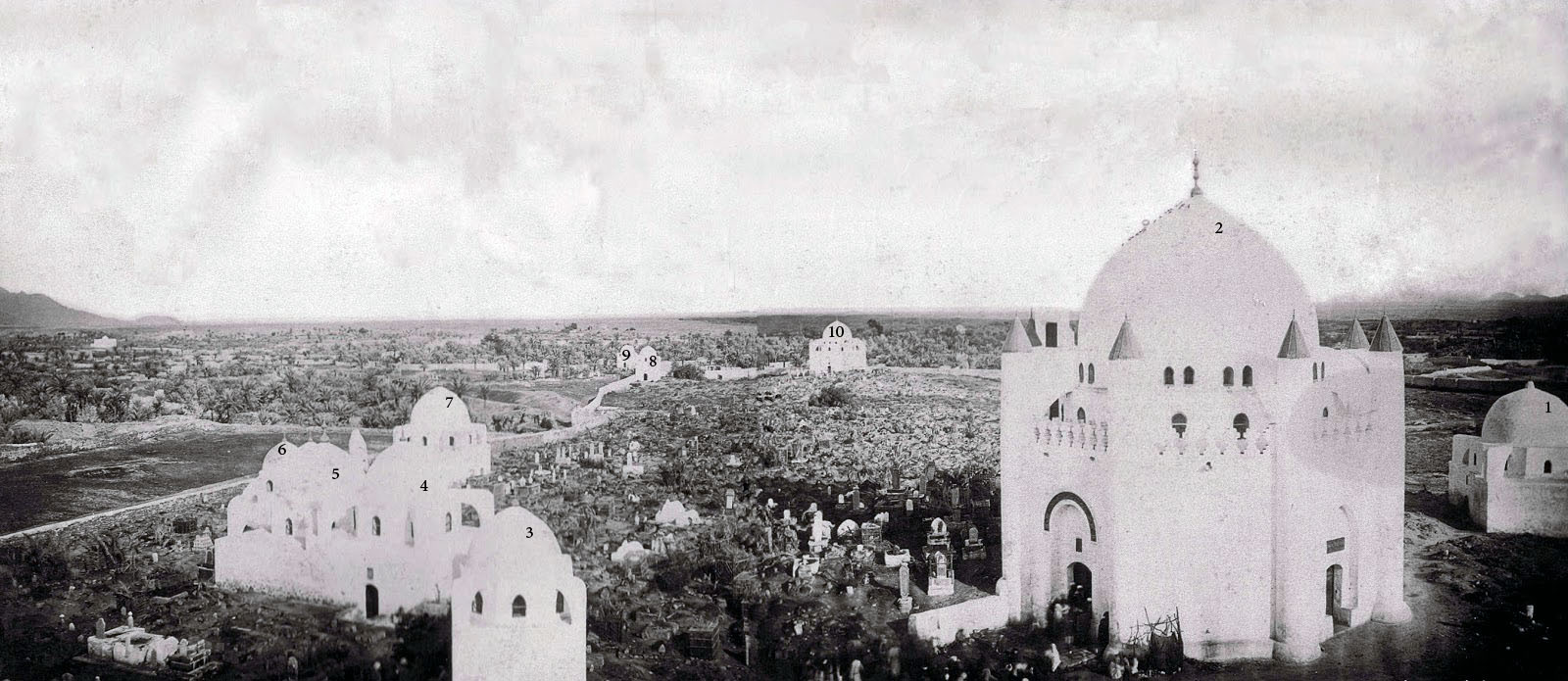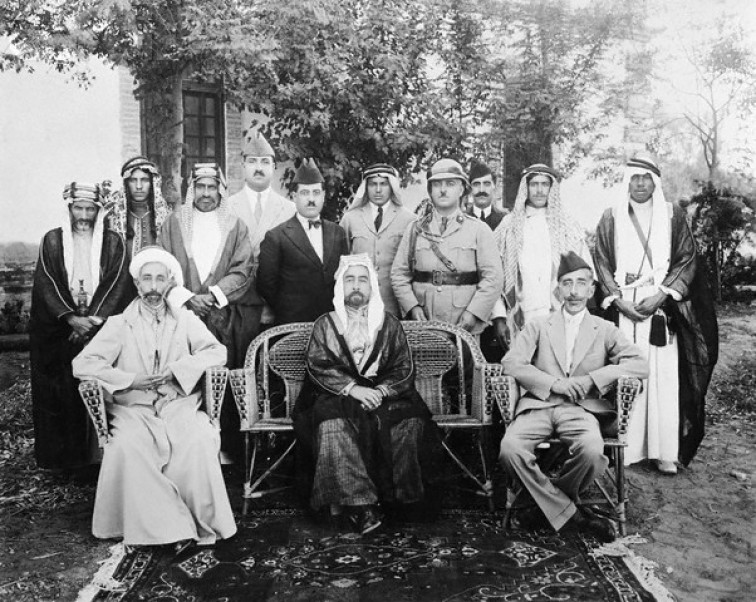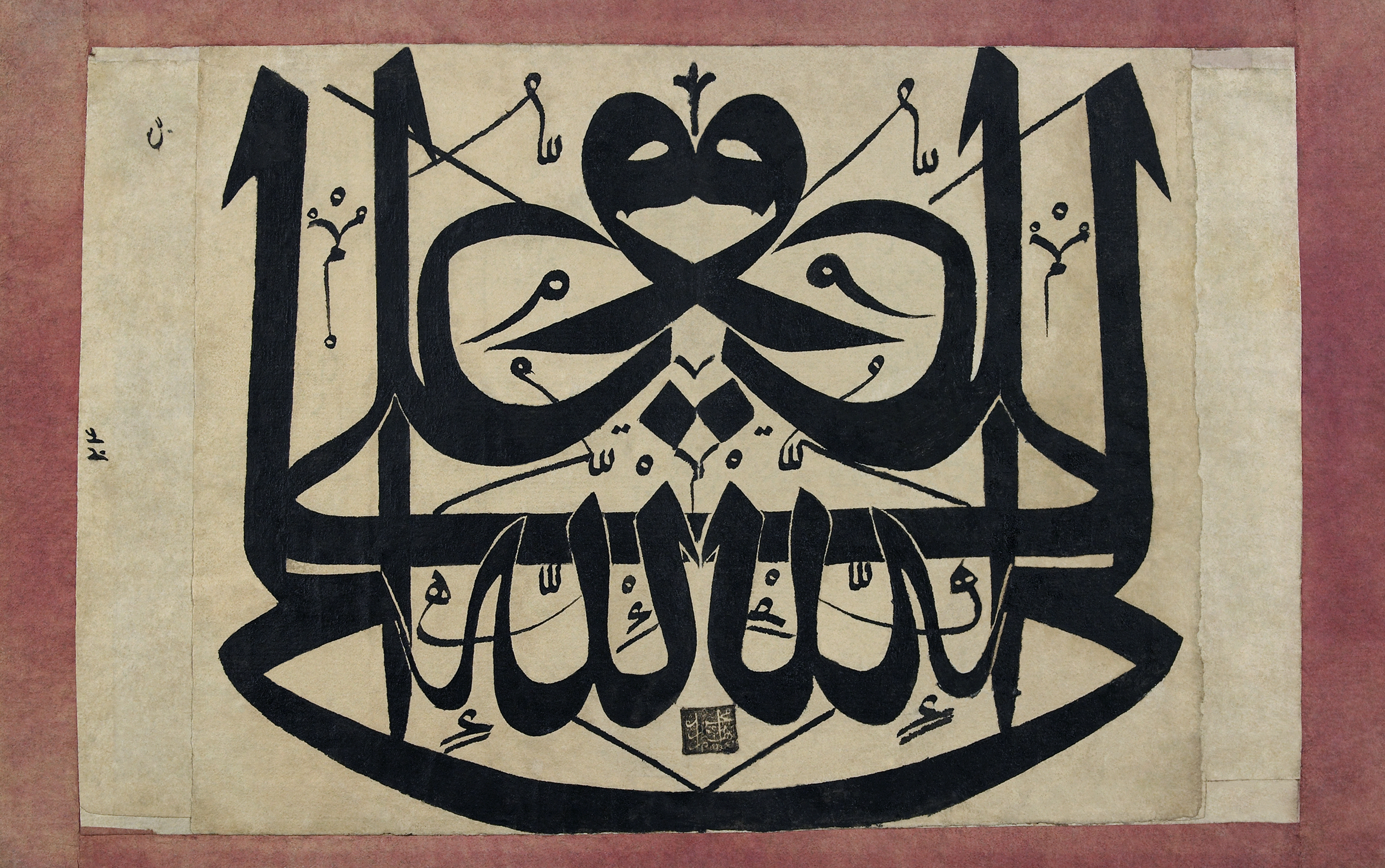|
Alids
The Alids are those who claim descent from Ali ibn Abi Talib (; 600–661 CE), the fourth Rashidun caliph () and the first imam in Shia Islam. Ali was also the cousin and son-in-law of the Islamic prophet Muhammad. The main branches are the Hasanids and Husaynids, named after Hasan and Husayn, the eldest sons of Ali from his marriage to Fatima, the daughter of Muhammad. As the progeny of Muhammad, they are revered by all Muslims. The Alids have led various movements in Islam, and a line of twelve Alids are the imams in Twelver Shia, the largest Shia branch. Children of Ali In addition to seventeen daughters, various sources report that Ali had eleven or fourteen, or eighteen sons. His first marriage was to Fatima, daughter of the Islamic prophet Muhammad, who bore Ali three sons, namely, Hasan, Husayn, and Muhsin, though the last one is not mentioned in some sources. Muhsin either died in infancy, or was miscarried after Fatima was injured during a raid on her ... [...More Info...] [...Related Items...] OR: [Wikipedia] [Google] [Baidu] |
Ali Ibn Abi Talib
Ali ibn Abi Talib (; ) was the fourth Rashidun caliph who ruled from until Assassination of Ali, his assassination in 661, as well as the first imamate in Shia doctrine, Shia Imam. He was the cousin and son-in-law of the Islamic prophet Muhammad. Born to Abu Talib ibn Abd al-Muttalib and Fatima bint Asad, Ali was raised by his elder cousin Muhammad and was Early Muslims, among the first to accept his teachings. Ali played a pivotal role in the early years of Islam when Muslims were severely persecuted in Mecca. After immigration () to Medina in 622, Muhammad gave his daughter Fatima to Ali in marriage and swore a pact of brotherhood with him. Ali served as Muhammad's secretary and deputy in this period, and was the flag bearer of his army. Numerous sayings of Muhammad praise Ali, the most controversial of which was uttered in 632 at the Ghadir Khumm, "Whoever I am his , this Ali is his ." The interpretation of the polysemous Arabic word is disputed: For Shia Islam, Shia Musl ... [...More Info...] [...Related Items...] OR: [Wikipedia] [Google] [Baidu] |
Husayn Ibn Ali
Husayn ibn Ali (; 11 January 626 – 10 October 680 Common Era, CE) was a social, political and religious leader in early medieval Arabia. The grandson of the Islamic prophet Muhammad and an Alids, Alid (the son of Ali ibn Abu Talib ibn Abd al-Muttalib, Abi Talib and Muhammad's daughter Fatima), as well as a younger brother of Hasan ibn Ali, Husayn is regarded as the third Imam in Shia Islam after his brother, Hasan, and before his son, Ali al-Sajjad. Husayn is a prominent member of the Ahl al-Bayt and is also considered to be a member of the Ahl al-Kisa and a participant in the event of the mubahala, event of the ''mubahala''. Muhammad described him and his brother, Hasan, as the leaders of the youth of Paradise in Islam, paradise. During the caliphate of Ali, Husayn accompanied him in wars. After the assassination of Ali, he obeyed his brother in recognizing the Hasan–Muawiya treaty, Hasan–Mu'awiya I treaty, despite it being suggested to do otherwise. In the nine-year pe ... [...More Info...] [...Related Items...] OR: [Wikipedia] [Google] [Baidu] |
Hasanids
The Ḥasanids ( or , ) are the descendants of Ḥasan ibn ʿAlī, brother of Ḥusayn ibn ʿAlī and grandson of Muhammad. They are a branch of the Alids (the descendants of ʿAlī ibn Abī Ṭālib), and one of the two most important branches of the (the other being the descendants of Ḥasan's brother Ḥusayn ibn ʿAlī, the Ḥusaynids). In Morocco, the term is particularly applied to the descendants of Muhammad al-Nafs al-Zakiyya, to distinguish them from the Idrisid dynasty, which is also of Ḥasanid descent. The Moroccan Ḥasanids proper have produced two dynasties, the Saadi dynasty and the Alawite dynasty, which still reign over the country. Dynasties Notable Ḥasanid dynasties in the Muslim world include: * Alawite dynasty of Morocco * Alavid dynasty of Tabaristan * Banu Ukhaidhir of Central Arabia * Bolkiah dynasty of Brunei * Hammudid dynasty of Southern Spain * Idrisid dynasty of Morocco * the various dynasties providing the Sharifs of Mecca; includ ... [...More Info...] [...Related Items...] OR: [Wikipedia] [Google] [Baidu] |
Hasan Ibn Ali
Hasan ibn Ali (; 2 April 670) was an Alids, Alid political and religious leader. The eldest son of Ali and Fatima and a grandson of the Islamic prophet Muhammad, Hasan briefly ruled as Rashidun caliphate, Rashidun caliph from January 661 until August 661. He is considered as the second Imamate in Shia doctrine, Imam in Shia Islam, succeeding Ali and preceding his brother Husayn ibn Ali, Husayn. As a grandson of the prophet, he is part of the and the , and also participated in the event of the mubahala. During the Ali as Caliph, caliphate of Ali (), Hasan accompanied him in the military campaigns of the First Fitna. Following Assassination of Ali, Ali's assassination in January 661, Hasan was acknowledged caliph in Kufa. His sovereignty was not recognized by Mu'awiya I, Mu'awiya ibn Abi Sufyan (), the governor of Syria, who led an army into Kufa while pressing Hasan for abdication in letters. In response, Hasan sent a vanguard under Ubayd Allah ibn al-Abbas to block Mu'awiya' ... [...More Info...] [...Related Items...] OR: [Wikipedia] [Google] [Baidu] |
Banu Hashim
Banu Hashim () is an Arab clan within the Quraysh tribe to which the Islamic prophet Muhammad belonged, named after Muhammad's great-grandfather Hashim ibn Abd Manaf. Members of this clan, and especially their descendants, are also referred to as Hashemites, Hashimites, Hashimids, or Bakara and often carry the surname . These descendants, and especially those tracing their lineage to Muhammad through his daughter Fatima, hold the traditional title of (often synonymous to ). From the 8th century on, Hashimid descent came to be regarded as a mark of nobility, and formed the basis upon which many dynasties legitimized their rule. Some of the most famous Islamic dynasties of Hashimid descent include the Abbasids (ruled from Baghdad 750–945; held the caliphate without exercising power 945–1258 in Baghdad and 1261–1517 in Cairo), the Fatimids (ruled from Cairo and claimed the caliphate 909–1171), the 'Alawi (rulers of Morocco, 1631–present), and the Hashemites (r ... [...More Info...] [...Related Items...] OR: [Wikipedia] [Google] [Baidu] |
Husaynids
The Husaynids ( or حسینیون, Ḥusayniyyūn) are a branch of the Alids who are descendants of Husayn ibn Ali, a grandson of the Islamic prophet Muhammad. It is one of the two main branches of the (the other being the descendants of Husyan's brother Hasan, the Hasanids). Genealogical trees Family tree of Husayn ibn Ali Dynasties * the various lines of Shi'a imams are largely Husaynid, being descended patrilineally from Husayn ibn Ali, the third imam. This applies to the Twelver Shi'a imams, the Zaydiyya, and the various lines of Isma'ili imams. * the Isma'ili Fatimid dynasty and the later Aga Khans. * a Zaydi dynasty, descended from Hasan al-Utrush, that intermittently ruled Tabaristan in the early 10th century. * the position of Sharif of Medina was in the hands of the Husaynid Banu Muhanna dynasty. * Al Qasimi of Sharjah and Ras Al Khaimah, United Arab Emirates. * The House of Hasib of Rajhat in Bihar are descendants from ... [...More Info...] [...Related Items...] OR: [Wikipedia] [Google] [Baidu] |
Attack On Fatima's House
The attack on Fatima's house refers to a disputed violent attack on the house of Fatima, daughter of the Islamic prophet Muhammad. The attack is said to have taken place shortly after the death of Muhammad in 11 AH (632 CE) and was instigated by his successor Abu Bakr and led by Umar, another companion. The purpose of the attack was to arrest Fatima's husband Ali, who had withheld his pledge of allegiance to Abu Bakr. Her injuries during the raid might have caused the young Fatima's miscarriage and death within six months of Muhammad. The above claims are brought forward by the Shia and categorically rejected by the Sunni, the two largest branches of Islam. On the one hand, Shia historians list some early Sunni sources that corroborate these allegations, arguing that sensitive information about the incident has also been censored by Sunni scholars who were concerned with the righteous presentation of companions. On the other hand, it is unimaginable for Sunnis that the compan ... [...More Info...] [...Related Items...] OR: [Wikipedia] [Google] [Baidu] |
Fatima
Fatima bint Muhammad (; 605/15–632 CE), commonly known as Fatima al-Zahra' (), was the daughter of the Islamic prophet Muhammad and his wife Khadija. Fatima's husband was Ali, the fourth of the Rashidun caliphs and the first Shia imam. Fatima's sons were Hasan and Husayn, the second and third Shia imams, respectively. Fatima has been compared to Mary, mother of Jesus, especially in Shia Islam. Muhammad is said to have regarded her as the best of women and the dearest person to him. She is often viewed as an ultimate archetype for Muslim women and an example of compassion, generosity, and enduring suffering. It is through Fatima that Muhammad's family line has survived to this date. Her name and her epithets remain popular choices for Muslim girls. When Muhammad died in 632, Fatima and her husband Ali refused to acknowledge the authority of the first caliph, Abu Bakr. The couple and their supporters held that Ali was the rightful successor of Muhammad, possibly referri ... [...More Info...] [...Related Items...] OR: [Wikipedia] [Google] [Baidu] |
Muslims
Muslims () are people who adhere to Islam, a Monotheism, monotheistic religion belonging to the Abrahamic religions, Abrahamic tradition. They consider the Quran, the foundational religious text of Islam, to be the verbatim word of the God in Abrahamic religions, God of Abraham (or ''Allah'') as it was revealed to Muhammad, the last Islamic prophet. Alongside the Quran, Muslims also believe in previous Islamic holy books, revelations, such as the Tawrat (Torah), the Zabur (Psalms), and the Injeel (Gospel). These earlier revelations are associated with Judaism and Christianity, which are regarded by Muslims as earlier versions of Islam. The majority of Muslims also follow the teachings and practices attributed to Muhammad (''sunnah'') as recorded in traditional accounts (hadith). With an estimated population of almost 2 billion followers, Muslims comprise around 26% of the world's total population. In descending order, the percentage of people who identify as Muslims on each ... [...More Info...] [...Related Items...] OR: [Wikipedia] [Google] [Baidu] |
Hashemite
The Hashemites (), also House of Hashim, are the Dynasty, royal family of Jordan, which they have ruled since 1921, and were the royal family of the kingdoms of Kingdom of Hejaz, Hejaz (1916–1925), Arab Kingdom of Syria, Syria (1920), and Kingdom of Iraq, Iraq (1921–1958). The family had ruled the city of Mecca continuously from the 10th century, primarily as vassals of outside powers, and ruled the thrones of the Hejaz, Syria, Iraq, and Jordan following their World War I alliance with the British Empire. The family belongs to the Dhawu Awn, one of the branches of the Hasanids, Ḥasanid Sharifs of Mecca, also referred to as Hashemites. Their eponymous ancestor is traditionally considered to be Hashim ibn Abd Manaf, great-grandfather of the Islamic prophet Muhammad. Another claimed ancestor is Ali ibn Abi Talib, the usurped successor of the prophet Muhammad according to Shia Islam. The Ḥasanid Sharifs of Mecca (from whom the Hashemite royal family is directly descended), inc ... [...More Info...] [...Related Items...] OR: [Wikipedia] [Google] [Baidu] |
Prophets And Messengers In Islam
Prophets in Islam () are individuals in Islam who are believed to spread God in Islam, God's message on Earth and serve as models of ideal human behaviour. Some prophets are categorized as messengers (; sing. , ), those who transmit Revelation, divine revelation, most of them through the interaction of an Islamic view of angels, angel. Muslims believe that many prophets existed, including many not mentioned in the Quran. The Quran states: "And for every community there is a messenger." Belief in the Islamic prophets is one of the Iman (concept)#The Six Articles of Faith, six articles of the Islamic faith. Muslims believe that the first prophet was also the first human being Adam in Islam, Adam, created by God. Many of the revelations delivered by the 48 prophets in Judaism and many prophets of Christianity are mentioned as such in the Quran with the Arabic versions of their names; for example, the Jewish Elisha is called Elisha in Islam, Alyasa', Job (biblical figure), Job is ... [...More Info...] [...Related Items...] OR: [Wikipedia] [Google] [Baidu] |
Twelver Shi'ism
Twelver Shi'ism (), also known as Imamism () or Ithna Ashari, is the largest branch of Shi'a Islam, comprising about 90% of all Shi'a Muslims. The term ''Twelver'' refers to its adherents' belief in twelve divinely ordained leaders, known as the Twelve Imams, and their belief that the last Imam, Imam al-Mahdi, lives in occultation (''ghayba'') and will reappear as "the awaited Mahdi" (''al-Mahdi al-muntazar''). Twelver Shi'as believe that the Twelve Imams are divinely appointed as both spiritual and political successors to the Islamic prophet Muhammad, and that they possess special knowledge and authority to guide the Muslim community. According to Twelver theology, the Twelve Imams are exemplary human individuals who rule over the Muslim community (''Ummah'') with justice, and are able to preserve and interpret the Islamic law (Sharia) and the esoteric meaning of the Qur'an. The words and deeds ('' sunnah'') of Muhammad and the Imams are a guide and model for the Musl ... [...More Info...] [...Related Items...] OR: [Wikipedia] [Google] [Baidu] |






